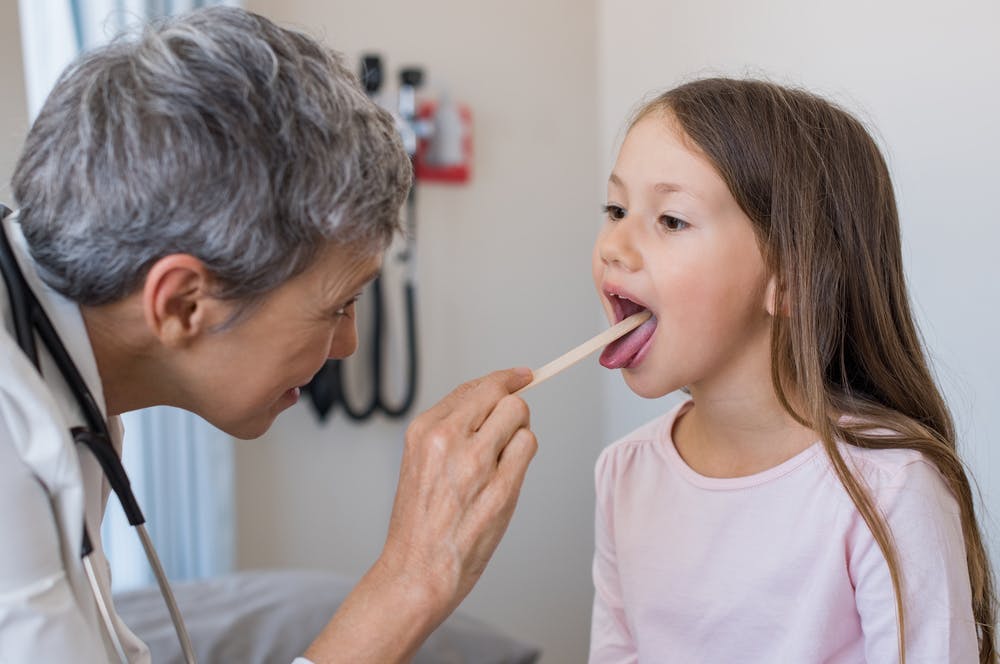What causes chest pain?
Chest pain is a common problem we see at GoHealth Urgent Care. The causes of chest pain range from life-threatening conditions to benign (non-dangerous) causes that often go away on their own. Since chest pain can be a confusing symptom, we wanted to explain the various causes of chest pain, and what you should do about them.
1. Myocardial infarction (AKA heart attack)
While only 5% of all chest pain is caused by a lack of oxygen to the heart, it’s one of the most serious causes of chest pain, leading to cardiac injury, arrhythmias, and even death if not diagnosed and treated rapidly.
In addition to chest pain, patients who are having a myocardial infarction (MI) can also experience dizziness, nausea and vomiting, shortness of breath, tingling in the arms and hands, and pain radiating to the shoulder, neck, or jaw.
Any patient experiencing these symptoms should go immediately to the Emergency Department for an EKG and a blood test known as “cardiac enzymes.” If a patient is suffering from myocardial ischemia (lack of oxygen to the heart) or myocardial infarction (death of heart tissue due to lack of oxygen), the faster medical providers intervene, the more likely patients are to survive the event and preserve their heart function.
2. Pulmonary embolism (AKA blood clot)
A pulmonary embolism (PE) happens when a blood clot becomes lodged in an artery in the lungs, cutting off blood flow to the surrounding lung tissue. PEs are a medical emergency because they can be fatal if they’re not detected and treated early.
Risk factors for developing a PE include inactivity or immobility for long periods, blood clotting disorders, cancer, obesity, tobacco use, birth control pills or hormone replacement therapy, recent trauma, pregnancy, and childbirth.
Symptoms of PE include chest pain, coughing up blood, rapid breathing, shortness of breath, and a rapid heart rate. Anyone experiencing these symptoms should go immediately to the Emergency Department where a blood test (called a D-dimer) and a CT scan of the chest can be performed. The faster a PE is detected and treated, the better the chances of survival are.
3. Pneumothorax (AKA collapsed lung)
Believe it or not, your lungs actually can collapse. The larger the portion of the lung that collapses, the more serious the condition is. Some cases of pneumothorax are caused by trauma to the chest, and others happen for no identifiable reason (known as “spontaneous pneumothorax”).
Men are seven times more likely to have a spontaneous pneumothorax than women. The highest prevalence of pneumothoraces is seen in patients in their 20s who are tall and who smoke tobacco products.
Symptoms of a pneumothorax include sudden onset of chest pain and shortness of breath. Pneumothoraces are diagnosed with a chest X-ray. The treatment depends on how large the pneumothorax is, and how symptomatic the patient is from it.
4. Pneumonia
Believe it or not, pneumonia (a lung infection) can actually cause chest pain. Why? The infection causes inflammation in the surrounding lung tissue, which causes some patients to feel pain in their chest or their back, depending on the location of the infection. Pneumonia-related chest pain is often worse with inspiration and with coughing.
In addition to a cough and chest pain, other symptoms of pneumonia include shortness of breath and fever. Any patient with these symptoms should have a chest X-ray performed. Patients who do have pneumonia are more likely to recover quickly and avoid hospital admission if the infection is diagnosed promptly and treated effectively.
5. Costochondritis
Costochondritis is an inflammation of the cartilage that connects the ribs to the sternum (the breastbone). Sometimes costochondritis happens for no identifiable reason. Other times it can be caused by heavy lifting, prolonged coughing, or chest trauma.
Symptoms of costochondritis include localized chest wall pain that worsens with palpation (touch) and inspiration.
While there’s no specific test to diagnose costochondritis, most diagnoses are made by first eliminating other potential causes with a chest X-ray and an EKG, and then arriving at a diagnosis based on exam findings and patients’ symptoms. Treatment for costochondritis includes warm compresses and anti-inflammatories.
We’re here to help
At our urgent care centers, we offer on-site X-rays and EKGs. Walk in or save your spot online.
Sources:
https://www.mayoclinic.org/diseases-conditions/myocardial-ischemia/symptoms-causes/syc-20375417
https://www.uptodate.com/contents/outpatient-evaluation-of-the-adult-with-chest-pain
https://my.clevelandclinic.org/health/diseases/15802-pulmonary-embolism-who-is-at-risk
https://www.uptodate.com/contents/primary-spontaneous-pneumothorax-in-adults


